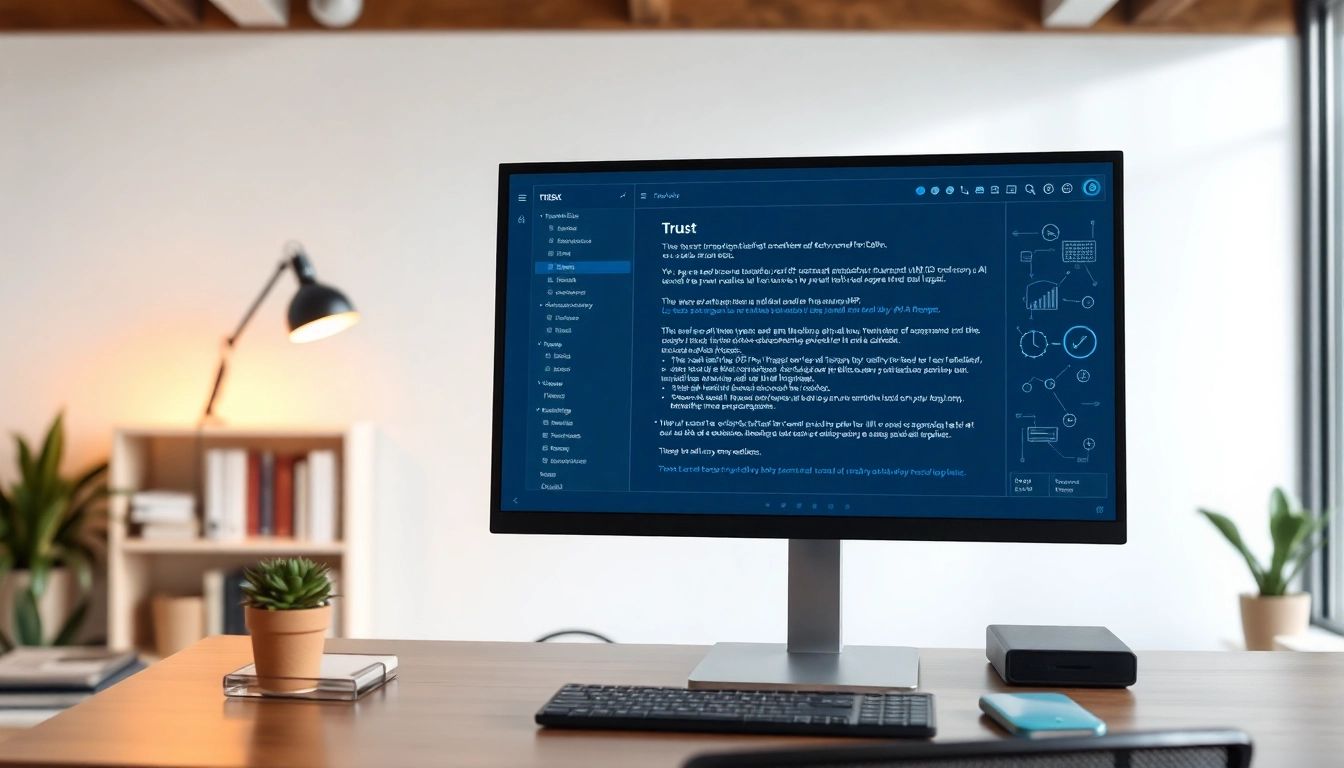Understanding the Role of Site Reliability Engineering Experts
The Definition and Scope of Site Reliability Engineering
Site Reliability Engineering (SRE) is a transformative approach that merges traditional software engineering with systems engineering to create scalable and highly reliable software systems. This discipline is primarily focused on maintaining the operational integrity, reliability, and performance of services and applications in production environments. SRE is not merely a function but an embodiment of a cultural shift that prioritizes proactive problem-solving and operational excellence. In essence, the role of Site reliability engineering experts centers around leveraging software principles to enhance the stability and reliability of complex systems.
Key Responsibilities of Site Reliability Engineering Experts
Site reliability engineering experts carry out a multitude of responsibilities, which can be categorically divided into several key areas:
- System Monitoring and Incident Response: They set up comprehensive monitoring solutions to detect irregularities in system performance and respond to incidents promptly.
- Capacity Planning: Experts analyze usage patterns and forecast future needs to ensure systems can handle increased traffic or load without performance degradation.
- Automation of Operations: They identify repetitive tasks and automate them to reduce human error, enhance efficiency, and free up time for more complex problem-solving tasks.
- Disaster Recovery Planning: Experts design and implement plans that ensure system recovery in the event of a catastrophic failure.
- Collaboration with Development Teams: They work closely with software development teams to integrate reliability into application design and facilitate smoother deployments.
Essential Skills for Site Reliability Engineering Experts
To excel in their role, site reliability engineering experts must possess a diverse set of skills:
- Strong Programming Skills: Proficiency in languages like Python, Go, or Java is crucial as automation and tooling are central to SRE.
- Systems and Networking Knowledge: Understanding OS fundamentals, cloud infrastructure, and networking setups is essential for effectively managing and troubleshooting systems.
- Problem-Solving Skills: SREs must analyze complex problems quickly to maintain operational integrity and user satisfaction.
- DevOps Practices: Familiarity with DevOps principles, including CI/CD (continuous integration/continuous deployment), is vital to bridging gaps between development and operations.
- Communication Abilities: Strong interpersonal skills are necessary for collaboration between teams and clear documentation of processes and systems.
Importance of Site Reliability Engineering in Modern IT
How Site Reliability Engineering Enhances System Stability
As organizations increasingly rely on digital platforms, the importance of stability in IT systems becomes paramount. Site reliability engineering plays a crucial role in enforcing system stability through:
- Proactive Monitoring: Continuous monitoring systems alert teams to potential issues before they escalate into significant outages. This proactive approach helps in maintaining uptime and user trust.
- Incident Management Frameworks: SREs implement incident response frameworks that streamline the resolution process and ensure minimal downtime.
The Impact of Site Reliability Engineering on User Experience
The end-user experience is directly correlated with system performance and reliability. By implementing SRE practices, organizations can ensure:
- High Availability: Consistently available services lead to higher customer satisfaction and retention rates.
- Fast Response Times: Reduced latency through effective resource allocation and optimization contributes to a seamless user experience.
- Reduction of Friction: By minimizing downtime and addressing performance bottlenecks, SREs help provide a smooth, uninterrupted user journey.
Evaluating Cost Efficiency with Site Reliability Engineering Initiatives
While implementing SRE practices requires an upfront investment, the long-term benefits often outweigh the costs. Evaluating cost efficiency involves:
- Reduced Outage Costs: The financial impact of downtime can be crippling. Effective SRE practices can lead to significant savings by minimizing service interruptions.
- Operational Efficiency: Automation and streamlined processes lower labor costs and reduce the resource footprint.
- Optimized Resource Utilization: SRE experts focus on maximizing resource allocation, leading to cost savings in infrastructure and software licensing.
Best Practices Adopted by Site Reliability Engineering Experts
Implementation of Automation Tools in Site Reliability Engineering
Automation is at the heart of SRE practices. Experts utilize various tools and technologies to automate their workflows:
- Configuration Management Tools: Tools like Ansible and Puppet automate deployment processes and configuration management, ensuring consistency across environments.
- Monitoring and Alerting Systems: Solutions like Prometheus, Grafana, or Datadog are employed to provide real-time monitoring capabilities, sending alerts for any discrepancies or failures.
- Continuous Deployment Pipelines: Utilizing CI/CD practices enables seamless code integration and deployment, reducing the risk of introducing bugs during software updates.
Collaboration Techniques Used by Site Reliability Engineering Experts
Effective collaboration is essential in SRE to bridge gaps between development and operations teams:
- Cross-Functional Teams: SREs often work within cross-functional teams involving both developers and operations personnel to promote shared responsibility for reliability.
- Regular Stand-up Meetings: Daily stand-ups facilitate communication and align team members on tasks, progress, and potential blockers in their workflows.
- Post-Mortem Analysis: Conducting post-mortem reviews after incidents encourages learning and collective improvement within teams, fostering a culture of continual progress.
Monitoring and Performance Measurement Strategies
Monitoring performance is key to SRE success. Various strategies include:
- Service Level Objectives (SLOs): Establishing clear SLOs helps define measurable performance targets and maintain accountability.
- Service Level Indicators (SLIs): Tracking SLIs allows teams to measure if they are meeting their SLOs, connecting performance to user satisfaction.
- Regular Performance Reviews: Conducting regular reviews of system performance metrics fuels data-driven decision-making and helps prioritize areas for improvement.
Challenges Faced by Site Reliability Engineering Experts
Common Issues in Implementing SRE Practices
Implementing SRE can bring forth various challenges, including:
- Cultural Resistance: Shifting company culture to prioritize reliability may meet resistance from teams accustomed to traditional operational styles.
- Tool Overhead: The proliferation of monitoring and automation tools can lead to complexity and confusion, necessitating proper tool management strategies.
- Knowledge Silos: Ensuring all team members are versed in SRE practices can be difficult, especially in large organizations with diverse teams.
Dealing with Complex Systems in Site Reliability Engineering
The complexity of modern software systems adds layers of difficulty for site reliability engineering experts:
- Interdependencies: Complex interdependencies between services can make troubleshooting difficult, leading to longer resolution times.
- Legacy Systems: Integrating new SRE practices into legacy systems presents challenges in terms of compatibility and performance bottlenecks.
- Scaling Challenges: As organizations grow, scaling infrastructure and processes to match demand requires careful planning and execution.
Mitigating Risks in Operational Processes
Reducing operational risks is an essential aspect of site reliability engineering:
- Incident Playbooks: Developing playbooks for common incidents allows teams to standardize their responses and improve incident management.
- Risk Assessments: Conducting regular risk assessments helps identify potential vulnerabilities and enables proactive mitigation strategies.
- Regular Failover Tests: Regularly testing failover strategies and disaster recovery plans ensures that teams are prepared for unexpected situations.
Future Trends in Site Reliability Engineering
Emerging Technologies Influencing Site Reliability Engineering
The landscape of SRE is constantly evolving, influenced by emerging technologies:
- Artificial Intelligence and Machine Learning: Integrating AI can enhance monitoring and incident response through predictive analytics and anomaly detection.
- Serverless Computing: The rise of serverless architectures shifts the focus of SRE towards managing functions as services, changing the traditional roles associated with infrastructure management.
- Containerization and Microservices: The adoption of containers and microservice architectures forces teams to rethink reliability strategies, particularly regarding service deployment and interaction.
The Evolution of Roles for Site Reliability Engineering Experts
As the field of SRE matures, the roles of experts are also evolving:
- Focus on Experience: Site reliability engineering experts are increasingly focusing on user experience to drive product development and strategic improvements.
- Enhanced Cross-Disciplinary Skills: Experts may need to develop further soft skills and enhance collaboration abilities across traditionally siloed technical and non-technical domains.
- Leadership Roles: Opportunities for SREs to step into leadership positions are growing as organizations realize the importance of operational reliability at the executive level.
Preparing for the Future: Skill Development for Site Reliability Engineering
To thrive in the evolving market, site reliability engineering experts must engage in continuous skill development:
- Staying Updated with Industry Trends: Regular engagement with industry seminars, webinars, and technical literature keeps experts abreast of the latest practices and technologies.
- Certifications: Pursuing relevant certifications can enhance credibility and knowledge, demonstrating proficiency in tools and practices.
- Fostering Mentorship: Building mentorship opportunities within organizations can help develop the next generation of SRE professionals, ensuring a robust skill pipeline for the future.



